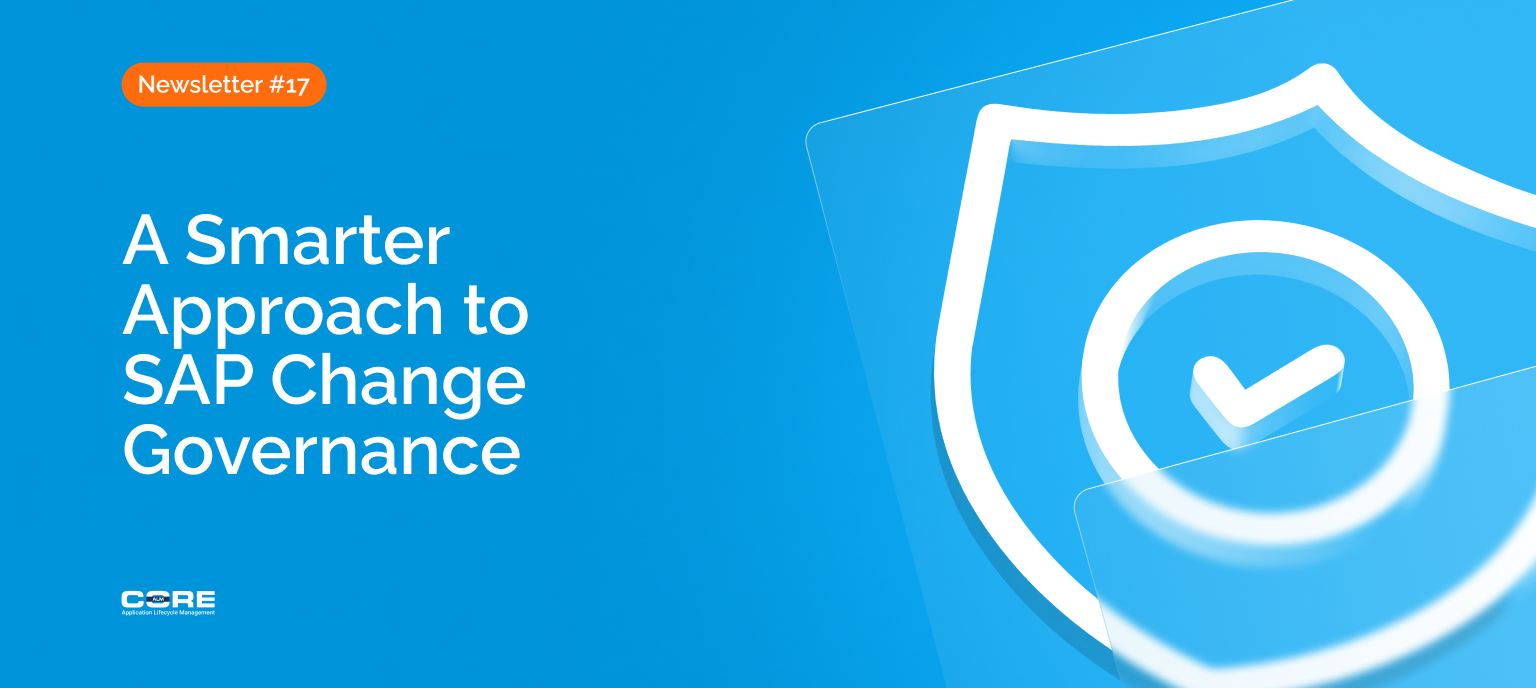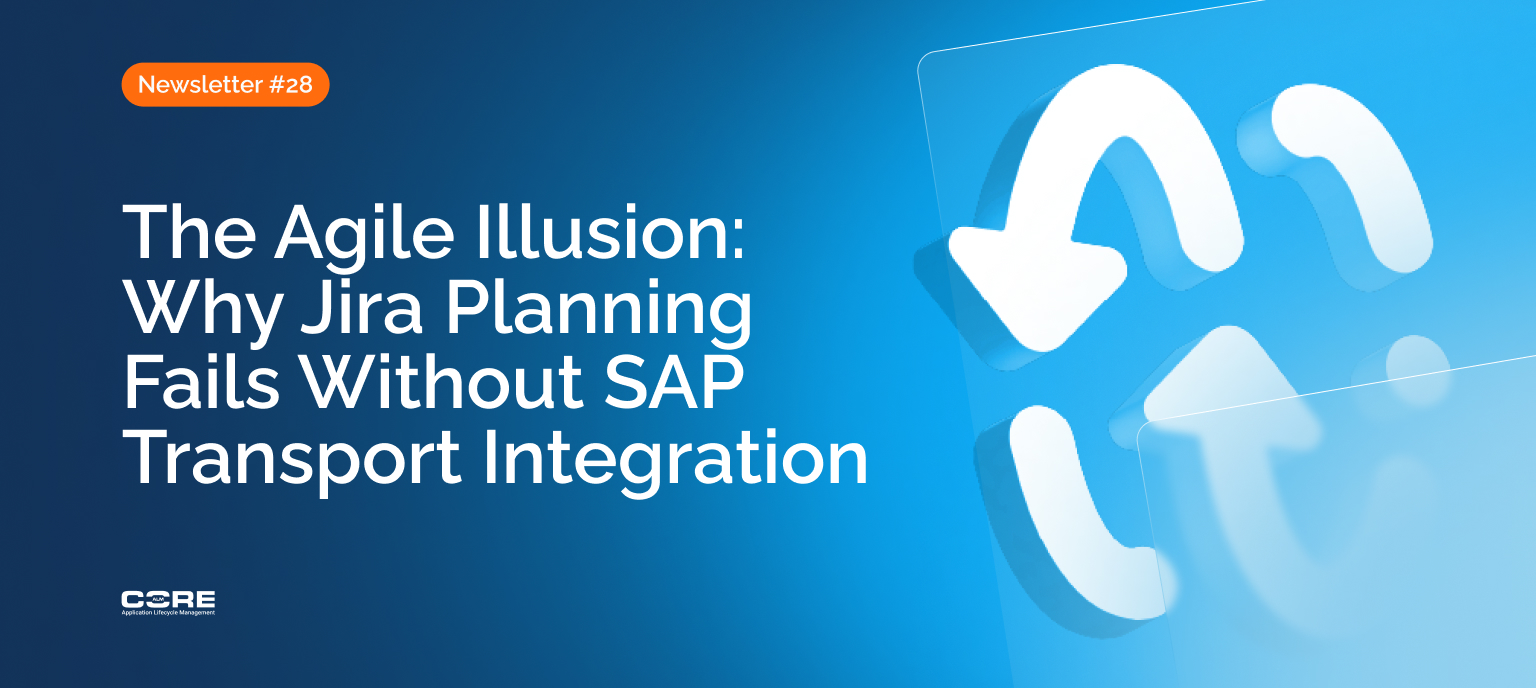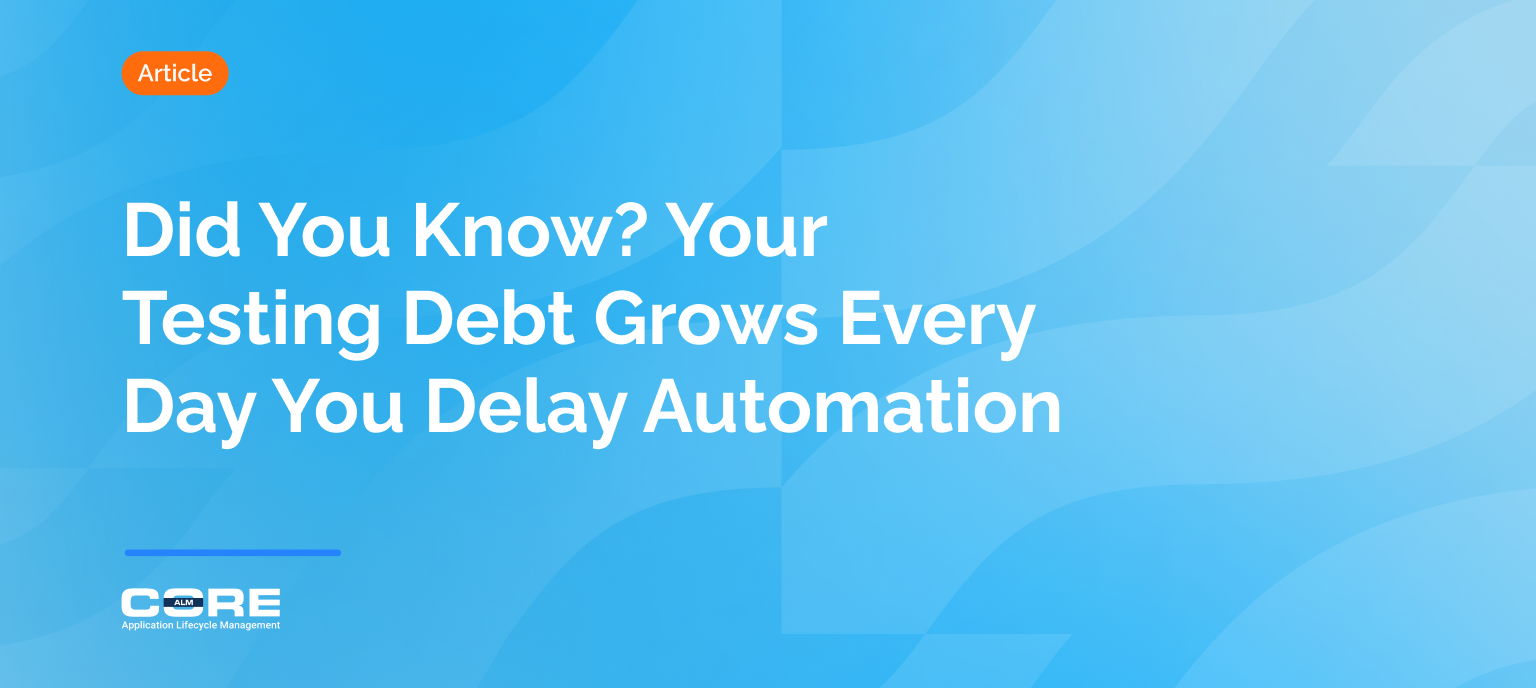Introduction
Governance should move with change, not freeze it at every gate.
SAP programs have long relied on governance to keep change under control. The problem is that most governance still works like a series of red lights: static checkpoints, CAB meetings, and manual sign-offs that stop progress until someone waves it forward. Even when approvals are logged in modern tools, the model itself has not changed.
That stop-and-go model is breaking down. With S/4HANA connected to cloud applications and side-by-side extensions in BTP, the volume and complexity of change is accelerating. At the same time, business leaders are demanding faster delivery, influenced by agile practices, DevOps pipelines, and AI-driven innovation. A governance model that pauses work at every stage cannot keep up.
The smarter alternative is pipeline-style governance. Work keeps moving, controls are embedded in the flow, and checks adapt automatically to the risk of each change. Evidence is captured as a byproduct of delivery, not as a separate task. This model gives SAP programs both speed and safety.
Governance should move with change, not freeze it at every gate.
Always Moving Instead of Stop-and-Go
Pipeline governance keeps work flowing while applying controls in-line.
In traditional SAP governance, a transport cannot move forward until it clears a CAB meeting or receives the right signatures. Every approval freezes the work, regardless of whether the change is routine or critical.
Pipeline governance works differently. Controls are built into the flow so the pipeline keeps moving. Routine changes pass through automated approval rules instantly. Higher-risk changes trigger additional checks, but they are managed in-line, not through a separate process. Instead of stopping at gates, changes continue until a control fails, at which point the flow diverts for review.
Solution in practice: This approach can be supported with CoreALM’s transport management solutions for Jira, Azure DevOps, and ServiceNow. These integrations allow approvals and rules to run inside the delivery pipeline, shifting governance from manual pauses to automated checkpoints that scale with the flow of work.
Pipeline governance keeps work flowing while applying controls in-line.
Embedded Evidence Instead of Parallel Processes
In a pipeline, audit trails are created automatically as part of delivery.
Under the traditional model, governance evidence is collected outside the flow. Teams pull screenshots, maintain spreadsheets, or re-enter approvals into SAP systems just to satisfy audit requirements. Compliance becomes a separate process layered on top of delivery.
Pipeline governance eliminates this duplication. Approvals, test results, and transport movements are logged automatically in the systems where work already happens. Evidence becomes a byproduct of the pipeline itself, always available and always complete.
Solution in practice: This can be achieved with CoreALM’s Cloud ALM connectors for Jira and Azure DevOps. These solutions synchronize requirements, tasks, and approvals across platforms, capturing governance data continuously without requiring teams to leave their daily tools or maintain parallel records.
In a pipeline, audit trails are created automatically as part of delivery.
Dynamic Risk Instead of Static Rules
Pipeline governance adapts oversight based on impact and complexity.</h5]
Traditional governance applies the same rules to every change. A low-risk UI tweak waits in the same CAB queue as a high-risk Finance transport. This wastes time on trivial changes and still fails to protect critical ones.
Pipeline governance adapts oversight in real time. Change impact analysis identifies which processes or integrations are affected by a transport. Automated testing validates those processes continuously, confirming whether the change introduces new risk. Oversight flexes automatically: low-risk changes keep flowing, while high-risk ones trigger deeper review.
Solution in practice: CoreALM’s integrations link transports, requirements, and tests across Cloud ALM, Jira, and Azure DevOps. By embedding impact analysis and automated testing into the pipeline with tools such as Tricentis LiveCompare and Tosca, organizations gain continuous assurance without adding extra effort or slowing delivery.
Pipeline governance adapts oversight based on impact and complexity.
Conclusion: Governance as Flow, Not Friction
Governance has always been essential to SAP programs, but the way it is executed must evolve. The stop-and-go model of static approvals and CAB meetings no longer matches the pace of modular SAP landscapes or the expectations of the business.
Pipeline governance provides a smarter path. Work continues moving while controls are applied in-line. Evidence is captured automatically as part of delivery. Oversight adapts dynamically to risk and complexity.
CoreALM helps organizations bring this model to life through transport management solutions and Cloud ALM connectors that embed governance directly into Jira, Azure DevOps, and ServiceNow. Combined with automated testing and optimization from Tricentis LiveCompare and Tosca, organizations can reduce risk and accelerate outcomes. The result is governance that delivers both speed and safety — flow instead of friction.




